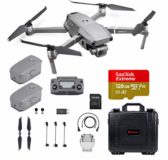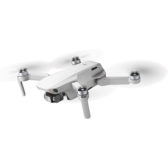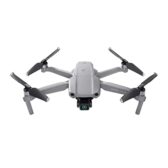The Best DJI Drones: The Best of the Best?
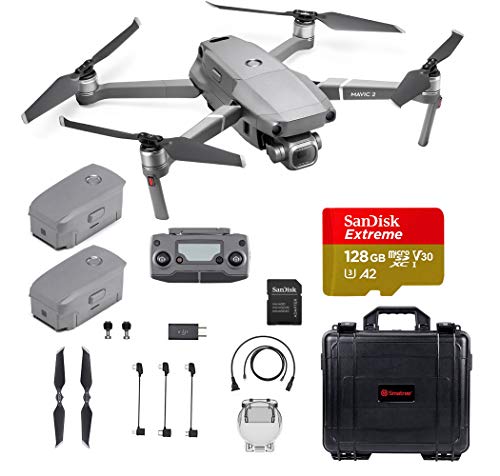
DJI Mavic 2 Pro
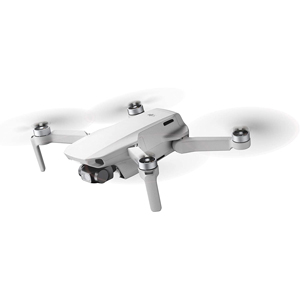
DJI Mini 2
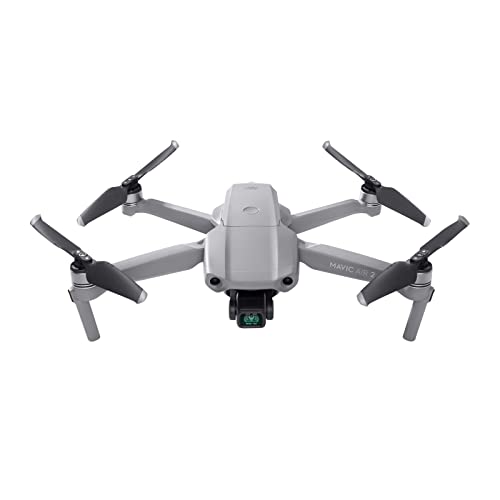
DJI Mavic Air 2
When it comes to drones, there’s one name that’s way above the rest – DJI. The Apple of the drone world, the company has been churning out hit after hit, starting with its iconic Phantom drone.
So today, we’re taking a look at some of the best drones you can get from DJI, from beginner to pro. But first, let’s explore what makes DJI so great, and why they’re the ones to beat in the current drone market.
The Best DJI Drones
We may receive compensation on qualifying purchases via our links. This does not change how we review items. For more information, please read our affiliate disclosure.
This luxury drone is one of the best in the market and comes with a 4-figure price tag.

- Flight Time: 30 minutes
- Range: 7 kilometers
- Camera: 4K resolution at 30 fps; 20 MP stills
- Weight: 1.64 pounds
- Gimbal: 3 Axis
The Mavic 2 Pro is a supercharged improvement of the already well-loved original Mavic drone. And that in itself is no easy feat. DJI did it by cramming it with every advanced technology in its arsenal.
First, let’s clear one thing up. The Mavic 2 actually comes in two versions, the Pro and the Zoom. Both are identical in terms of specs and features, except for the camera.
The Mavic 2 Pro comes equipped with a Hasselblad L1D-20c camera with a 1 inch CMOS sensor, while the Mavic 2 Zoom has a smaller 1/2.3 inch CMOS sensor with a 24-88 mm optical lens.
Pound for pound, the Mavic 2 Pro’s camera quality beats the Zoom by a wide margin. It’s capable of better photo resolutions, almost like shooting RAW. It also has aperture control, which gives professional photographers massive control over their photo quality.
In fact, the photo quality of the Mavic 2 Pro is so darn incredible, it’s worth getting the drone just for this feature alone. It’s certainly the best image quality you’ll ever get out of a compact, consumer drone.
Since the Mavic 2 Pro is the better of the two, we’ll continue to cover it in this review.
Handling wise, the Mavic 2 Pro is as easy to fly as its predecessor, the Mavic. The new omnidirectional obstacle avoidance system, however, adds a layer of confidence into your flying. The drone will alert you when it’s about to encounter an obstruction, and will even brake automatically if it’s about to crash.
As for intelligent flight modes, the Mavic 2 Pro has a much-improved version of DJI’s visual recognition technology, ActiveTrack. Now ActiveTrack 2.0, it’s much more precise and makes use of the omnidirectional obstacle avoidance sensors nicely.
Build quality is still superb, and flight time is still at the DJI-level range of 30+ minutes.
Overall, the Mavic 2 series, and the Pro, in particular, are one of the most powerful compact drones in the DJI family. Its camera quality is hard to beat, with tight handling and safety features to match.
If you can afford the hefty price tag, this is THE drone to have.
+ Pros
Our top rated mini drone with huge performance in a tiny body. Perfect for…everyone!

- This drone weighs less than 250g
- 12MP camera / 4K video, 4x digital zoom
- 3-axis motorized gimbal for image stability
- 10km range, max altitude of 4km
- Battery life: 31 minutes
DJI just can’t seem to stop releasing incredible drones.
The original Mavic Mini was our best ever value-for-money pick and now DJI have outdone themselves with the Mini 2.
We are blown away with the quality, performance and battery life that you can get with the DJI Mini 2 for a fairly affordable price. No, it’s not cheap, but its price falls far below most top products from competitors.
We’d say it’s now our favorite value-for-money pick by a long way, and it’s perfect for photography, videography, traveling, hobbyists and, well, everyone else too!
Better still, with its weight under 249g, it doesn’t even need to be registered with the FAA or CAA. That means you don’t need to be a registered drone pilot to fly this beauty.
+ Pros
- Cons
The Mavic Air 2 is a groundbreaking development in the mid-budget range. Almost no other drone compares for the price.

- Flight Time: 34 minutes
- Weight: 1.3lbs / 0.59kg
- Camera: 48MP with 4K/60FPS video
- Range: 10km / 6.2 miles
The DJI Mavic Air 2‘s quality isn’t much of a surprise to anyone that knows the drone space — we’ve been blown away with what this machine is capable of considering it falls way below the $1,000 price tag that is usually required for such a premium product.
Its 34 minutes of flight time is staggering given its size and price, making it one of the biggest battery life drones you’ll find.
The Mavic Air 2 has obstacle detection in three different directions and intelligent tracking, along with DJI’s ActiveTrack technology, to also make this one of the best bang-for-the-buck follow me drones that there are.
With a 48MP 1/2-inch CMOS sensor camera and 4K video supported by a 3-axis gimbal, this is a brilliant option for anyone looking to take premium quality photos and videos without having to spend an arm and a leg.
+ Pros
- Cons
The Mavic Mini has replaced the hugely popular Spark model and will become one of the most popular drones of all time.
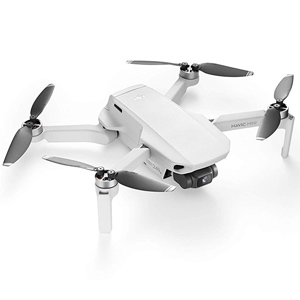
- Flight Time: ~28 minutes
- Charge Time: ~90 minutes
- Range: 3000m / 9842ft
- Remote Controller: WiFi 5.4GHz & 2.4Ghz (included in the set)
- Camera: 3-axis gimbal 2K Camera with 12MP
- Live Video Transmission Range: 2500m / 8200ft
- Weight: 249g / 8.78oz
- Working Temperature: 0°C ~ 40°C
- Rated for indoor and outdoor use
The specs on the DJI Mavic Mini are nothing we haven’t seen before from DJI products, but never in this small of a size.
The full diagonal distance of the drone is just above 8 inches, with the base being even smaller. Generally, even a child could hold the Mavic Mini comfortably in their palm. Landing and takeoff from the palm are also the best way to operate it.
Other features follow the DJI standard. The drone is exceptionally easy to operate and has all of the autonomous features as its larger cousins.
The controller does give more range to your device and has that tactile feel. But, if you want to use the Mavic Mini with just your smartphone, that is possible as well. The DJI Fly app is one of the best drone apps available.
What most people will be interested in is the camera, and that is where this model shines. The 2K camera has a 3-axis gimbal and an 83° FOV angle. As the camera can swivel up to 90°, it will give you a wide range of filming options.
The CMOS chip may only have 1/2.3” (6.17mm by 4.55mm) but comes with 12MP effective pixels. This would make the DJI Mavic Mini one of the best smartphone cameras available, but also the one that flies.
Ability to autonomously follow your face, your friends, and any area you designate will allow you to get some genuinely cinematic shots with your drone.
Professional photographers will see the low ISO capability and low frame rate in 2K, but for most other users, there will be no issues.
The DJI Mavic Mini can become a primary tool of many vloggers, YouTubers, and Instagramers. And, for any experienced drone pilot, they will be a lot of fun and a great experience to fly.
+ Pros
- Cons
A more efficient and quieter version of the Mavic Pro, though at a small bump in cost.
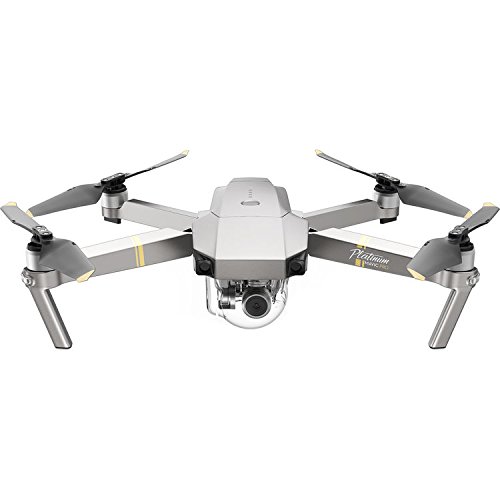
- Flight Time: 30 minutes
- Range: 7 kilometers
- Camera: 4K resolution at 30 fps; 12 MP stills
- Weight: 1.64 pounds
- Gimbal: 3 Axis
At first glance, the Mavic Pro looks very much like its close sibling, the Mavic Pro – only with a new, more premium paint job. But there a few key differences that make the platinum version worth looking into.
First, it’s one of the more quieter drones in DJI’s lineup. Thanks to the combination of FOC technology and noise cancellation propellers, the Platinum Pro is 60% less noisy than the Mavic Pro.
The noise-canceling flight also leads to more efficiency, making the Platinum Pro capable of longer flight times, up to 3 minutes more. However, some would argue that it’s more economical just to buy a spare battery. At the moment, however, the extra few minutes can prove beneficial.
Apart from this, the Platinum Pro still has the intelligent flight modes, camera quality, and safety features of the original Pro. In fact, they are so similar that their batteries are compatible with each other.
Right off the bat, the same camera is maintained as with the Pro version. The 28mm lens with 78.8-degree FOV can still deliver epic looking landscape shots, while 4K resolution still outputs footage at incredible definition.
The Platinum Pro uses the same GPS and Vision Positioning System, allowing it to maintain a stable position better than most drones in the market.
In DJI fashion, both the Pro and Platinum Pro are a joy to fly, thanks to its flight features and intelligent flight modes. Follow Me Mode uses GPS transmissions (as opposed to the visual recognition of newer DJI drones), but works just as well.
But compared to other GPS-based drones, the Platinum Pro’s obstacle avoidance system is top-notch. Its Forward Vision System makes it hover automatically whenever it encounters any obstruction in front of it.
Overall, the Mavic Platinum Pro is a worthy addition to DJI’s arsenal. It carries on what made Mavic Pro excellent and adds performance features into it.
If this is your first Mavic drone, this is a good pick. However, if you’re a Mavic Pro drone owner looking to upgrade, the small incremental improvements might not be worth it.
+ Pros
- Cons
Our number one Follow Me drone pick for aspiring videographers and photographers.
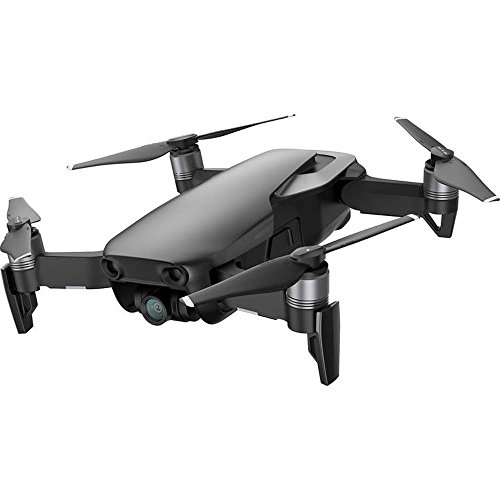
- Follow Me Method: visual recognition using DJI ActiveTrack
- Flight Time: 21 minutes
- Camera: 4K video at 30 fps, with support for 32 MB panoramas and HDR photos
- Weight: 15.16 ounces
The Mavic Air is DJI’s take on an ultra-portable, take-anywhere drone. It combines the power of its more powerful older brother, the Mavic, with the portability of the Spark.
For one, it’s exceptionally compact at less than a pound. It folds nicely into a package that you can easily fit into your backpack. And when action calls, simply unpack and launch.
Now let’s talk about this drone’s Follow Me mode. The Mavic Air uses a much-improved version of DJI’s proprietary ActiveTrack technology. It’s capable of actively tracking up to 16 subjects simultaneously, with a higher degree of precision. Even when your target is zipping and zooming around, the Mavic Air seems to be able to lock on to it.
Within ActiveTrack, you have further options on how you want Follow Me to work. For instance, you can try Trace mode, which maintains a fixed distance between the drone and the target.
The cool thing about ActiveTrack is that it also includes obstacle avoidance. If it detects an obstacle while in Follow Me mode, it will change its altitude until it stays clear of the obstruction. After that, it will continue to keep on track and follow the subject.
Overall, the DJI Mavic Air has one of the most advanced Follow Me features in the market. This is on top of its excellent camera quality, durable construction, and tons of flight options.
The Mavic Air is indeed the ultimate travel drone that’s meant to be taken to the roughest of trips, like hiking or mountain climbing.
+ Pros
- Cons
The DJI Spark is our premium pick for the best beginner drone.
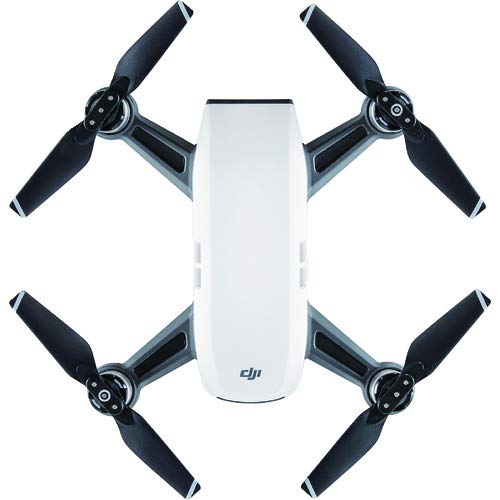
- Flight Time: 16 minutes
- Charge Time: 52 minutes
- Range: 2 km
- Remote Controller: not included (sold separately)
- Camera: 12 MP camera at 1080p HD resolution.
- Weight: 1.49 pounds
- Rated for indoor and outdoor use
For the ultimate beginner drone, the DJI Spark is one of the finest choices you can make. It comes from one of the best drone manufacturers in the world.
The DJI Spark is the smallest and lightest of DJI’s offerings, and that makes it very easy to fly. It’s quite intuitive with multiple fun ways to control the drone.
The most innovative feature has got to be its hand controls. You can program the DJI Spark to respond to gesture commands, such as putting your palm forward to make it stop. You can also get the drone to launch automatically when it recognizes your face.
With Intelligent Flight Modes, object tracking, and one-tap controls, you’ll be incredibly spoiled when it comes to flying the DJI Spark. We’ll even argue that it’s too easy that it might not teach you fundamental flying skills.
Unfortunately, it doesn’t include a remote controller. You need to shell out separately for that, on top of the already high cost of the drone itself.
In the end, the DJI Spark is truly a top-notch beginner drone — arguably the very best. It marries ridiculously easy flight controls and excellent camera quality in a durable and compact frame.
The only drawback? It’s more costly than cheap beginner drones. But you truly get what you pay for.
+ Pros
- Cons
Why DJI Is One Of The Best Drone Brands
DJI, short for Da Jiang Innovations, currently has an impressive 70% share of the entire consumer drone market. You could say DJI did to consumer drones what Apple did to the smartphone market – innovate and dominate.
The Shenzen-based firm was started by Frank Wang in 2006, then a student at the Hong Kong University of Science and Technology. It took one $2,300 research grant by the university for him to develop the prototype of what would become the first drone of this future company.
Since then, it has seen exponential growth. From a startup in 2011 that saw its revenues at a mere $4.2 million, DJI is now a billion-dollar company. Its 2017 sales alone broke through the $2 billion mark.
Its breakthrough came with the release of its Phantom drones in 2013. That particular model brought drones to the masses, which before was only limited to the military and a few industries. For $1,000, you could shoot stable, professional-looking aerial videos like the ones you see in Hollywood movies.
And people got hooked. The Phantom was a record-breaking success, which spawned a dozen other imitators and defined an entire industry.
But what makes DJI drones so successful in the first place?
First off, it focused on technical superiority. Back then (and even now), most people’s perception of Chinese products is that they are cheap and inferior. A lot are just wannabes and rip-offs of American gadgets.
Not DJI. From the beginning, they worked only with the best manufacturers to bring top-notch tech to their drones. Their processors, for example, are made by Aramballa, making DJI drones achieve 4K video at higher frame rates. It’s worth mentioning that Aramballa also manufactures the chips that power Go Pro cameras.
Thanks to their superior technical specs, DJI drones’ video resolution is almost unmatched in the market. They also have very long flight times (averaging 30 minutes) and has advanced flight modes that make it a breeze to fly
Hence, DJI has been the drone of choice for professional photographers and videographers all over the world. Never mind that DJI tends to be one of the most expensive in the market.
But that’s changing, and DJI is trying to introduce new models that would fill in other markets as well. For long, DJI has been king of the hill in the $1,000+ market thanks to its Phantom series.
With the release of its Mavic series, DJI is hoping to enter the below $1,000 market. It’s even trying to invade the budget drone space, with the launch of the Spark.
At an average retail price of $400, however, DJI’s Spark is still relatively more expensive, especially since you have lots of choices in the below $200 or even $100 range.
But if you’re looking for a technically superior drone in every way (and don’t mind the price tag), DJI is still the undisputed market leader.
DJI’s Drone Categories
DJI’s lineup is more skewed towards the professional market (those in the upper $1,000). Hence, it doesn’t have anything much in the way of budget drones (their most inexpensive is the Spark, starting at around $400).
Phantom
The Phantom series is arguably DJI’s most popular product. The iconic model was, for a time, one of DJI’s most advanced consumer drones. The Phantom 3, recognized by many as one of the most important iterations of the series, featured 1080p resolution and features which were groundbreaking at the time.
DJI Phantom blurred the line between consumer and professional drones. Their fantastic flight times, high-resolution cameras, and flight modes were lauded by photographers and videographers. At the same time, it was widely used by enthusiasts as a recreational drone.
Nowadays, the Phantom series is geared more towards the professional aerial imaging market with its latest version, the Phantom 4 RTK. If you’re a serious pro photographer, the Phantom is still one of the best drones you can buy.
As for the consumer market, DJI has taken care of that with the introduction of …
Mavic
The Mavic is DJI’s flagship drone for consumers with price ranges that are more affordable compared to a Phantom. But that doesn’t mean they’re less capable. Actually, far from it. A lot of the Mavic drone specs can compete with the Phantom, like the Mavic Pro 2 model.
A common feature of all Mavic drones is that they’re foldable, making them easy to carry around.
Within the Mavic line, there are plenty of options to choose from at different budget levels. The most inexpensive in their range is the Mavic Air, which combines the power of the original Mavic with the portability of its little brother, the Spark.
At the other end of the spectrum is the Mavic Pro. A portable drone bordering on the pro line, it features longer flight times and more intelligent flight modes.
So for most consumers who want an entry into the DJI drone world, the Mavic is the perfect place to start. They’re much more portable than a Phantom yet has the safety, power, and flight features DJI is known for.
But for something a bit cheaper yet still distinctly DJI, might we suggest…
Spark
The Spark is the baby of the DJI family and marketed as the ultimate beginner mini drone for around $400. Its specs are what you would expect from a drone at that price, like a 1080p HD camera. But the rest of it is signature DJI.
One of the highlights of the Spark is its easy to use flight modes. Hand gesture control is one of its signature features, allowing you to control the drone intuitively. Until the release of the Mavic Air, this was a feature that was exclusive to the Spark.
It also has 3D obstacle avoidance and plenty of intelligent flight features. Speaking of flight, the Spark’s flight time is also above average for a start drone at 16 minutes.
We recommend the Spark for people who just want a mini drone to take selfies with, or just to play around.
Inspire
The Inspire is DJI’s foray into the professional drone market. Geared towards Hollywood-level video productions, it’s designed to create incredible cinematic shots with ease. As expected, it’s also ridiculously expensive.
The Inspire is based on the Phantom drone but enhanced with more professional features. You can create complex, dramatic shots with its advanced flight modes, and shoot at up to 6K resolution. It also flies faster and maneuvers better than any other DJI drone.
Final Thoughts
You really can’t wrong with any of DJI’s offerings, as this review shows. Every drone they have all sport above-average flight times, industry-standard flight handling, and impressive camera quality.
The only consideration, really, is which one to get at your current budget. Happy shopping!

